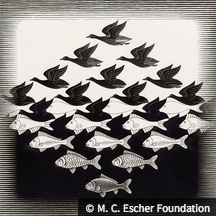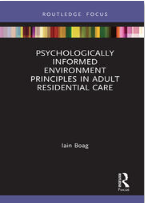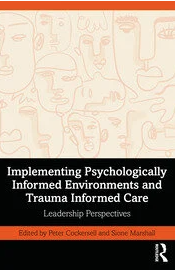Hybrids and transitional formats
Since the publication of PIEs 2.0 (HERE) many services, trainers and consultants have adopted some parts of the full framework, those that are most closely suited to their work, but retained others from PIEs One. The result is a number of ‘hybrids’, or intermediate formats.
Of these hybrid formats, the most frequently used currently are those that were keen to retain a clear focus on the centrality of relationships (HERE) ; and/or those that work in a more contained context, where external relationships are less of an issue (HERE). These may often highlight the built environment and it's 'social spaces' - one of the key themes of the original PIEs One account (HERE).
The strength of these hybrids, usually honed over many months or years of discussions, is that they typically arise from multiple workshops, training sessions etc, in a particular context (HERE), and with multiple services, whether those entirely new to the concepts or those already fairly advanced in their development.

In striking a balance between the full 'PIEs 2.0' account and a more pragmatic, slimmed down version, they provide greater clarity and confidence from the outset. They can therefore be particularly useful for services that are new to the PIEs approach; those that have further to go; or those in transition between the relatively simple model of PIEs One and a more in-depth exploration.
Hybrid accounts also work well for services that wish to introduce new features more specific to their particular context and task, although in the longer run, customising the PIEs 2.0 framework can provide the same and even greater flexibility, with better comparability with others : HERE).
But for those that wish to go deeper into the practicalities, the PIEs 2.0 framework can be invoked subsequently (see below).


Two very useful recent books in the PIEs publications area (HERE) use hybrid models, in the context of therapeutic and recovery services.
The centrality of Relationships
For many services in the earlier stages of development as PIEs, making clear the central importance of relationships seems a higher priority. This was one of the most welcome features that emerged from the discussions in the early development of the PIEs approach (HERE.)
Yet in PIEs 2.0 it was not highlighted as such, ie. as a named core theme. PIEs 2.0 instead drilled down to the practical expression and day-to-day management of these issues, in 'Rules, Roles and Responsiveness : HERE)
You can read the full story of the development of PIEs 2.0 from the original 'classic' accounts, in 'From PIEs One to PIEs 2.0' : HERE); and on the limitations of the current PIEs 2.0 account (HERE and HERE).

See also 'Where are relationships in the PIEs 2 framework?' (HERE)
Drilling down and broadening out
For those that do wish to go deeper into the practicalities, the PIEs 2.0 framework can be introduced subsequently. It is also quite possible to customise and slim down the full PIEs 2.0 framework by simply setting aside those features of the whole that are only marginally relevant - if at all - to the current principal concerns of any service.
(NB: This is the approach recommended for the Pizazz and the PIE Abacus, both of which start with the full framework, but expect services to customise and/or focus on particular issues of concern.)
For an account of how PIEs One, hybrid accounts, and a number of other frameworks for organisational change can be 'nested' within the overall PIEs 2.0 framework, see 'Nested frameworks' : PAGE IN DRAFT).

For an exploration of using the PIE approach to complement other comparable approaches, see : Nesting frameworks: HERE
